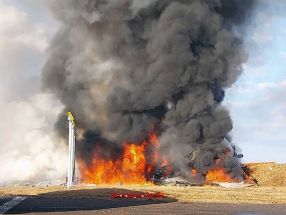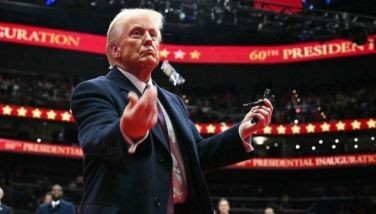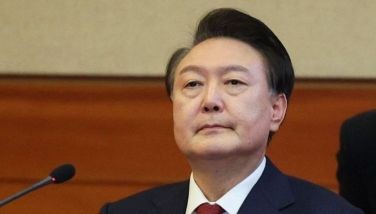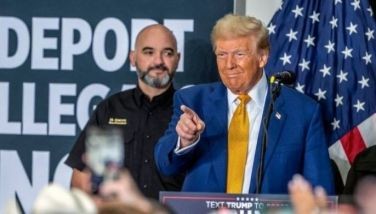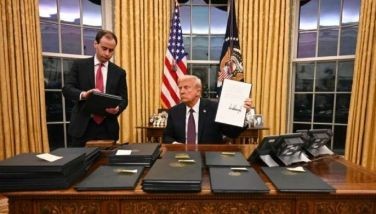Rival Koreas again show mastery at pulling back from brink
SEOUL, South Korea — The Koreas on Tuesday once again proved their mastery at pulling back from the brink — this time with an accord forged in two marathon negotiating sessions over three days.
Authoritarian North Korea previously refused to even admit to, let alone apologize for, Seoul's accusation that North Korean land mines maimed two South Koreans. But after a vague North Korean expression of "regret," South Korea agreed to stop its anti-Pyongyang propaganda broadcasts and the rivals found a way to save face.
Here's a look at how they've pulled off similar feats, sometimes with the involvement of South Korea's ally, the United States, over the years:
___
December 2010: North Korea backs off from an earlier threat of "catastrophic retaliation" after South Korea defiantly goes ahead with live-fire drills near the country's disputed western sea boundary.
This standoff is the result of similar drills by Seoul a month earlier that drew a North Korean artillery bombardment that killed two marines and two civilians on a front-line South Korean border island.
North Korea saves face by asserting that it didn't respond to the second drill because South Korea conducted it in a less provocative way. Seoul says both drills were the same.
___
May 2010: North Korea threatens "all-out counterattacks" after Seoul moves to resume psychological warfare operations to punish the North over an alleged torpedo attack that killed 46 South Korean sailors earlier in the year.
Although South Korea restores the loudspeakers now being used to pipe propaganda over the border, it does not follow through on its vow to turn them on.
North Korea, which denies being behind the torpedo, later makes conciliatory gestures, including hosting the reunions of families separated by the Korean War. Foreign analysts say it is an attempt to improve ties with the outside world and stimulate a flow of much-needed aid.
___
Early 2000s: In what has been called the "second North Korean nuclear crisis," animosity soars after Washington says the North, after being confronted in 2002 by a U.S. envoy, admits privately that it has a secret nuclear fuel program, a violation of an earlier nuclear accord.
North Korea denies this and, already angry at being lumped earlier by President George W. Bush into an "Axis of Evil," says in early 2003 that it has withdrawn from the Nuclear Non-Proliferation treaty. The U.S. says the North has restarted its nuclear reactor.
Tensions mount precipitously before Seoul and Washington turn to diplomacy in summer 2003 with so-called six-party talks involving the Koreas, Japan, Russia, China and the United States.
South Korea, meanwhile, tries to better ties with the North under two liberal presidents, including Kim Dae-jung who is awarded the 2000 Nobel Peace Prize for his efforts to promote peace on the Korean Peninsula.
Although North Korea conducts its first nuclear bomb test in 2006, the international disarmament talks result in nuclear deals seen as landmark at the time. The negotiations, however, have been stalled since 2008, and North Korea says it is again producing bomb fuel.
___
1992-94: The "first North Korean nuclear crisis" includes North Korean threats to withdraw from the NPT and Washington's exploration of possible air strikes amid U.S. government estimates that the North is pursuing large-scale nuclear bomb fuel production.
There's also the North's 1994 threat, for the first time, to turn Seoul into a "sea of fire." This phrase has been repeated so many times since then that it's largely ignored in Seoul, but many South Koreans at the time rushed to supermarkets to stock up on instant noodles and other provisions.
Eventually, with the help of a 1994 trip to Pyongyang by former U.S. President Jimmy Carter, negotiators settle the so-called Agreed Framework that's meant to cap the North's atomic efforts in return for aid. It holds, sometimes shakily, until the next crisis, in 2002.
North Korea founder Kim Il Sung and his South Korean counterpart, Kim Young-sam, also agree to hold what will be the first inter-Korean summit, but that plan is scrapped when Kim Il Sung dies in July 1994.
___
1968: A team of 31 North Korean commandos slips undetected across the border and comes within striking distance of the Seoul palace of President Park Chung-hee, the dictator father of current President Park Geun-hye.
After a last-minute stand by South Korean security forces repels the assault, the only captured agent says he came to "slit the throat of Park Chung-hee."
Furious, Park establishes a secret commando team tasked with demolishing Kim Il Sung's presidential mansion.
Tensions later ease amid a global mood of detente, but the commando team, incensed that its planned infiltration is aborted, mutinies in 1971, killing its trainers and marching on Seoul before being stopped.
Despite this drama, the rival Koreas eventually sign a major accord in 1972 to work toward peaceful reunification.
- Latest
- Trending














